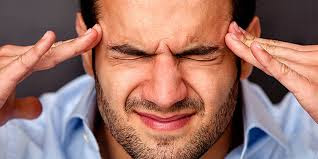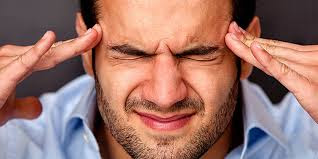What is the difference between them and how is each case treated? They may have some common symptoms, but they differ and require different handling to treat them;
Suppose you have a headache with nausea or runny nose, itching and watery eyes. You immediately assume that the headache is due to some sinusitis, right? Not always!. More than 4 in 5 people think that their headache is due to sinusitis with symptoms like the above, but in fact they have a migraine. And the problem is that if you try to treat migraines with methods for sinus headache, or vice versa, then the treatment does not work.
The differences
Sinus headache and migraine headaches may have some common symptoms, such as:
-Pain focused on the forehead
Itching or watery eyes
-Pain that worsens when you move or when you shake your head
But, migraine is often accompanied by other symptoms, such as:
-Nausea or vomiting
Sensitivity to sound or light
Intense pain that "hits" you only on one side of the head
What the expert says
Migraine is usually the underlying cause of such a headache in people who have frequent, severe headaches, says Stephen Silberstein, a professor of neurology at Thomas Jefferson University. He is the man who wrote the guidelines for the diagnosis and treatment of migraine as defined by the American Academy of Neurology.
"If you have a 'coming and going' headache, then 95% of them are migraines," says Silberstein. "They usually tell their doctor that they feel sick and have a headache." Sinus headache is usually caused by an infection and inflammation of the nasal passages. This leads to congestion which in turn causes pain and increased pressure on the forehead and back of the cheekbones.
What does the treatment include in each case
For sinus headache treatment begins with decongestants, painkillers and nasal irrigation, to reduce the pressure in the nasal sinuses and the "nausea". Antibiotics or nasal steroids are often used as a second method to treat the underlying infection or some chronic condition that causes sinusitis. A sinusitis headache caused by an infection logically resolves quickly after starting treatment.
Migraine treatment does not simply focus on stopping the migraine. It also concerns the prevention of future migraines, the reduction of the frequency with which they occur, their severity and duration.
Medications, called triptans, are used during a migraine flare-up to reduce pain. Other drugs, developed primarily to treat epilepsy, depression and hypertension, can also be used to prevent future migraine attacks.
Botox injections have also been used in recent years to prevent chronic migraines. Growth hormone therapy can also be prescribed to women who have migraines when they are associated with their menstrual cycle. Lifestyle changes can play an important role in migraines. Stress reduction techniques (such as exercise, relaxation and biofeedback) help prevent a relapse and reduce the severity of migraines.
The confusion
Suppose you have a migraine. But you do not know it from the beginning and so you treat it with analgesics because you think it is a sinus headache. This can make things worse. You may experience some temporary relief, but it is very likely that you will have a new headache after a while.
"Many of the medications for sinusitis contain analgesics," says Silberstein, adding: "Abuse of analgesics can cause new headaches after a while." Understandably, most people suspect sinusitis headaches first if they have a stuffy nose and watery eyes at the same time. But your body's reaction to pain can fool you.
When the body feels pain in the head, especially in the forehead, then it reacts almost reflexively and activates nerves that create hydration and itching in the eyes, numbness and runny nose. If you do not know that all forms of pain can cause such a reaction in the body, then you mistakenly associate these symptoms with sinusitis.
Source: www.webmd.com

